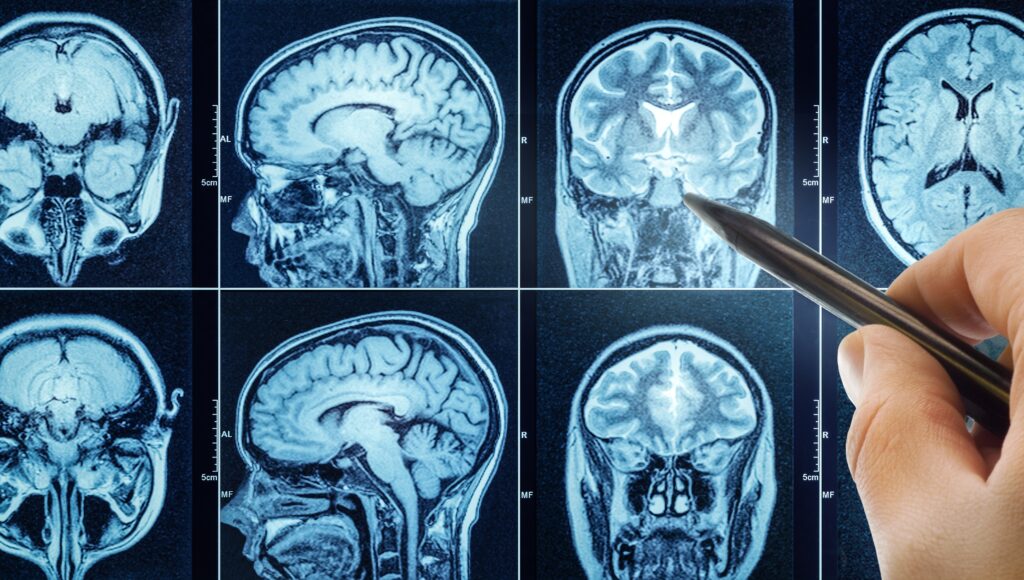The locus coeruleus, a tiny cluster of brain cells, is gaining recognition for its role in regulating sleep and attention. Insomnia sufferers know the struggle of taming racing thoughts and the longing for an off-switch. Interestingly, neuroscientists have discovered that our wakefulness operates on a continuum, controlled by interconnected brain regions. Central to this system is the locus coeruleus, or “blue dot,” named for the sapphire-colored neurons that produce norepinephrine—a key neurotransmitter in arousal regulation.
Although once believed to be dormant during sleep, the locus coeruleus shows subtle activity at night, helping manage sleep quality. This insight could lead to better treatments for sleep disorders, including those linked to anxiety.
Located in the brainstem near the neck, the locus coeruleus contains only about 50,000 neurons out of the brain’s billions. Discovered in the 18th century, its significance became clearer in the 20th century when scientists linked its blue pigment to brain signaling. Norepinephrine boosts neural communication by increasing the likelihood of neuron firing, with different brain regions responding based on their sensitivity to the neurotransmitter.
The locus coeruleus functions like a “gearbox,” as described by neuroscientist Mithu Storoni in Hyperefficient. The gears represent different states of focus and arousal:
- Gear 1: Minimal blue dot activity creates a wandering mind and diffuse attention.
- Gear 2: Moderate activity sharpens focus, aiding tasks that require intellectual concentration.
- Gear 3: High activity heightens environmental sensitivity, activating the “fight or flight” response. However, this state can make it difficult to maintain focus or stay calm.
Circadian rhythms influence which “gear” the brain is in. Blue dot activity rises during the day and decreases toward evening, aligning with the body’s natural sleep-wake cycle.
At night, the locus coeruleus exhibits intermittent firing rather than complete inactivity. Research by Anita Lüthi at the University of Lausanne shows that bursts of blue dot activity every 50 seconds during non-REM (NREM) sleep stimulate sensory regions like the thalami. This increases awareness of external stimuli without fully waking the sleeper. Such vigilance likely evolved to protect against nighttime threats.
The transition into REM (rapid eye movement) sleep, linked to vivid dreams and memory consolidation, is tightly regulated by low locus coeruleus activity. This control prevents the body from acting out dreams due to temporary paralysis during REM sleep, a state called atonia.
Lüthi’s findings, although conducted on mice, suggest that disruptions in locus coeruleus activity might underlie sleep problems in humans, particularly under conditions of stress or anxiety. Laboratory mice exposed to mild stress showed heightened blue dot activity, leading to fragmented sleep.
Scientists are exploring ways to calm the locus coeruleus to improve sleep. In South Korea, researchers have tested a device that applies a small electrical current to dampen blue dot activity, though its effectiveness in treating insomnia remains uncertain.
In the meantime, we can optimize our routines to support better rest. Avoiding overstimulation from screens and letting the mind unwind before bedtime helps prevent the brain from shifting into a high-gear state. Storoni notes that pushing through exhaustion can cause the brain to stay stuck in overdrive, making it harder to relax.
Physical activities influence the locus coeruleus through the autonomic nervous system. Intense exercise activates the sympathetic arm, increasing arousal—helpful for morning wakefulness but counterproductive at night. Gentle activities, such as stretching and breathing exercises like pranayama, activate the parasympathetic nervous system, promoting calm and reducing mental chatter.
Meditation, mindful movements, and controlled breathing have shown promise in improving sleep by lowering arousal and reducing the time it takes to fall asleep. While there is no instant switch for sleep, managing lifestyle habits and leveraging the mind-body connection can greatly enhance sleep quality and mental well-being.
